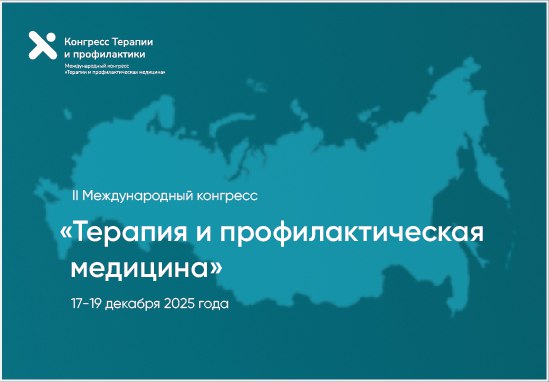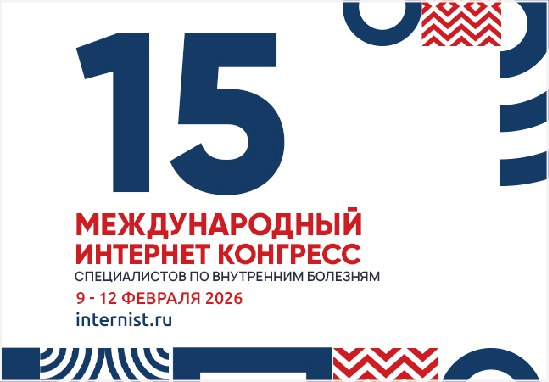ANTIHYPERTENSIVE THERAPY TACTICS IN HYPERTENSIVE CRISE COMPLICATED BY HAEMORRHAGIC STROKE
https://doi.org/10.15829/1728-8800-2013-1-17-24
Abstract
Aim. To identify the optimal tactics of antihypertensive therapy (AHT) in patients with hypertensive crise (HC), complicated by haemorrhagic stroke (HS).
Material and methods. Forty patients aged 46–87 years, who were hospitalised with HC and HS as its complication.
Results. All patients were divided into two groups, according to the median levels of systolic blood pressure (SBP) at 20 minutes after the start of the treatment: SBP >161 mm Hg vs. SBP <161 mm Hg. A significantly better survival was observed in patients with a higher degree of the 20-minute SBP eduction. In addition, patients were divided into tertiles of the 20-minute SBP levels. Participants with SBP 136–149 mm Hg demonstrated a significantly better survival. The degree of SBP reduction at 220 minutes was not significantly associated with survival. Furthermore, the patients were divided into two groups by the rate of SBP reduction. Faster rates were associated with a better survival (PGW=0,002). The second part of the study was focused on the assessment of effectiveness and safety of urapidil hydrochloride (Ebrantil). The patients were randomised into two groups: one group was administered Ebrantil, while another received the standard neuroresuscitation unit treatment. Ebrantil therapy demonstrated a fast and effective SBP reduction at 20 minutes, which was also associated with a better survival.
Conclusion. We identified optimal, associated with a better survival, BP levels (136–149 mm Hg) for patients with HC complicated by HS. Target BP levels should be achieved within 20 minutes, as a slower BP reduction is linked to a worse prognosis. Ebrantil is an effective and safe antihypertensive medication.
About the Authors
G. E. GendlinRussian Federation
A. V. Melekhov
Russian Federation
Yu. I. Ostrovskaya
Russian Federation
G. I. Storozhakov
Russian Federation
K. M. Gorshkov
Russian Federation
D. B. Sokolan
Russian Federation
I. S. Aliev
Russian Federation
I. A. Voropaeva
Russian Federation
References
1. Qureshi AI, Ezzeddine MA, Nasar A, et al. Prevalence of elevated blood pressure in 563,704 adult patients with stroke presenting to the ED in the United States. Am J Emerg Med 2007; 25: 32–8.
2. Castillo J, Leira R, Garcia MM, et al. Blood pressure decrease during the acute phase of ischemic stroke is associated with brain injury and poor stroke outcome. Stroke 2004; 35: 520–6.
3. Leonardi-Bee J, Bath PMW, Phillips SJ, et al. Blood pressure and clinical outcomes in the International Stroke Trial. Stroke 2002; 33: 1315–20.
4. The European Stroke Organisation (ESO) Executive Committee and the ESO Writing Committee: Guidelines for management of ischaemic stroke and transient ischaemic attacks 2008. Cerebrovasc Dis 2008; 25: 457–507.
5. Adams HP, del Zoppo G, Alberts MJ, et al. Guidelines for the early Management of Adults with ischaemic stroke. A Guideline from the American Heart Association/American Stroke Association Stroke Council, Clinical Cardiology Council, Cardiovascular Radiology and Intervention Council and the Atherosclerotic Peripheral Vascular Disease and the Quality of Care and Outcomes in Research Interdisciplinary Working Group. Stroke 2007; 38: 1655–711.
6. Guidelines of the Ministry of Health. Management of patients with stroke in the prehospital setting. 2005. Russian (Методические рекомендации МЗ РФ. Ведение больных с острым нарушением мозгового кровообращения на догоспитальном этапе. 2005г).
7. Guidelines of the stroke. Concept of the diagnostics and treatment of patients with acute stroke. Russian Ministry of Health. 2000. Russian (Методические рекомендации по ОНМK. Принципы диагностики и лечения больных с острыми нарушениями мозгового кровообращения. Министерство здравоохранения РФ. 2000г).
8. Anderson CS, Huang Y, Arima H. Effects of Early Intensive Blood Pressure-Lowering Treatment on the Growth of Hematoma and Perihematomal Edema in Acute Intracerebral Hemorrhage. Stroke 2010; 41 (2): 307–12.
9. Delcourt C, Huang Y, Wang J, et al. INTERACT II Investigators. The second (main) phase of An open, randomised, multicentre study to investigate the effectiveness of anintensive blood pressure reduction in acute cerebral haemorrhage trial (INTERACTII). Int J Stroke 2010; 5 (2): 110–6.
10. Antihypertensive Treatment of Acute Cerebral Hemorrhage (ATACH) investigators. Antihypertensive treatment of acute cerebral hemorrhage. Crit Care Med 2010; 38 (2): 637–48.
11. Sato S, Yamamoto H, Qureshi AI, et al.; ATACH-II study group. Antihypertensive Treatment of Acute Cerebral Hemorrhage (ATACH) -II at Japan site: Study design and advance construction of domestic research network. Rinsho Shinkeigaku 2012; 52 (9): 642–50.
12. Disease of the nervous system. Guide for physicians. Edited Yakhno NN, Shtulman DR. Moscow: Medicine, 2001; 1: 231–302. Russian (Болезни нервной системы. Руководство для врачей. Под ред. Яхно Н.Н., Штульмана Д.Р. М.: Медицина 2001; 1: 231–302).
13. Vibers DO, Feigin VL, Brown RD. Handbook of Stroke. Lippincott-Raven Publishers, Philadelphia — New-York, 1997.
14. Warlow CP, Dennis MS, J van Gein, et al. Stroke. A practical guide to management. Oxford. Black well science Ltd., 1996, pp. 6.32–49
15. Shevchenko OP, Praskurnichiy EA, Yakhno NN, Parfenov VA. Arterial hypertension and cerebral stroke. Moscow: Reopharm. 2001. Russian (Шевченко О. П., Праскурничий Е. А. Яхно Н. Н., Парфенов В.А. Артериальная гипертония и церебральный инсульт. М.: Реафарм, 2001).
16. Ram CV, Kaplan NM. Alpha- and beta-receptor blocking drugs in the treatment of hypertension. Curr Probl Cardiol 1979; 3 (10): 1–53.
17. Wacker J, Werner P, Walter-Sack I, et al. Treatment of hypertension in patients with pre-eclampsia: a prospective parallel-group study comparing dihydralazine with urapidil. Nephrol Dial Transplant 1998; 13 (2): 318–25.
18. Suwelack B, Gerhardt U, Hohage H. Therapy of hypertensive crises. Med Klin (Munich) 2000; 95 (5): 286–92.
19. Golikov PP, Davydov BV, Marchenko VV, et al. Urapidil effects on oxidative stress in hypertensive crises. Klin Med (Mosk) 2000; 78 (7): 42–5. Russian (Голиков П.П., Николаева Н.Ю., Марченко В.В., и др. Влияние урапидила на окислительный стресс при гипертонических кризах. Клиническая медицина 2000; 78 (7): 42–5).
20. Amodeo C, Barros LM, Batlouni M, et al. Antihypertensive effect of urapidil in mild to moderate arterial hypertension. Randomized, double-blind versus placebo study. Arq Bras Cardiol 1993; 61 (2): 127–30.
21. Hirschl MM, Seidler D, M llner M, et al. Efficacy of different antihypertensive drugs in the emergency department. J Hum Hypertens 1996;10 Suppl 3: S143–6.
22. Grossman E, Ironi AN, Messerli FH. Comparative tolerability profile of hypertensive crisis treatments. Drug Saf 1998; 19 (2): 99–122.
23. Russian Medical Society of Arterial Hypertension. Russian Scientific Society of Cardiology. Diagnosis and treatment of arterial hypertension. Russian guidelines (4th revision). Moscow Medicine 2010. Russian (Российское медицинское общество по артериальной гипертонии (РМОАГ), Всероссийское научное общество кардиологов (ВНОК). Диагностика и лечение артериальной гипертензии. Российские рекомендации (4-й пересмотр). М., 2010).
Review
For citations:
Gendlin G.E., Melekhov A.V., Ostrovskaya Yu.I., Storozhakov G.I., Gorshkov K.M., Sokolan D.B., Aliev I.S., Voropaeva I.A. ANTIHYPERTENSIVE THERAPY TACTICS IN HYPERTENSIVE CRISE COMPLICATED BY HAEMORRHAGIC STROKE. Cardiovascular Therapy and Prevention. 2013;12(1):17-24. (In Russ.) https://doi.org/10.15829/1728-8800-2013-1-17-24
























































